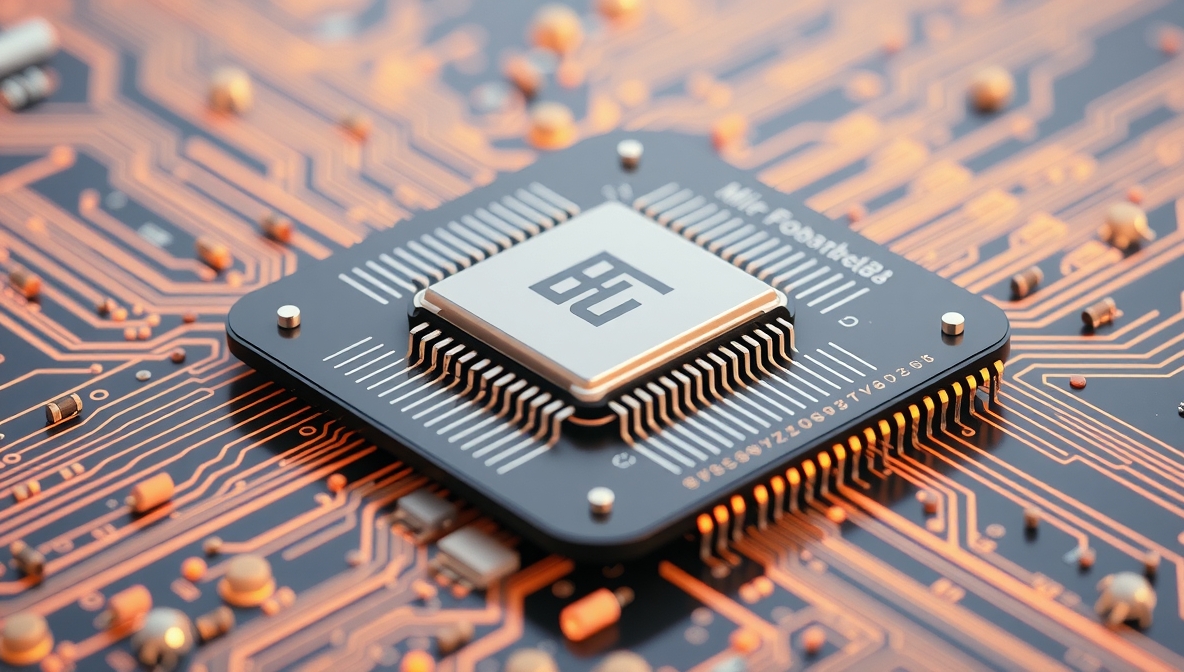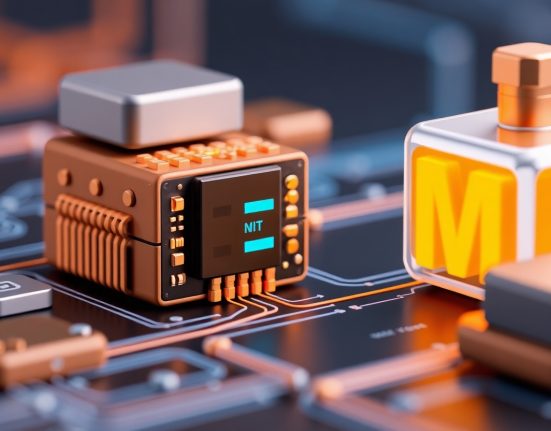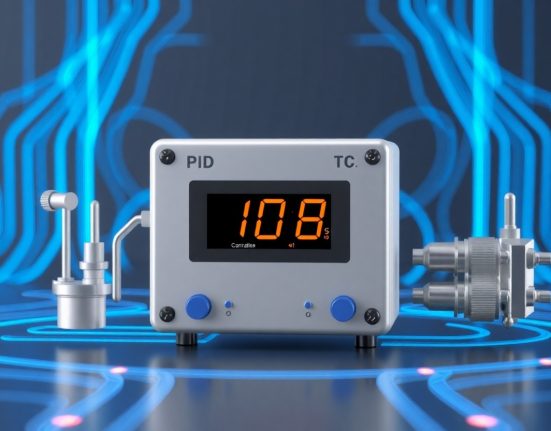Introduzione
In un mondo in cui la tecnologia è incorporata in ogni aspetto della nostra vita, esiste un componente elettronico che funge da cuore pulsante della maggior parte dei dispositivi intelligenti che ci circondano: il microcontrollore. Questo piccolo componente, spesso non più grande di un'unghia, combina un'unità di elaborazione, memoria e capacità di input/output su un singolo chip, permettendo a diversi dispositivi – dai semplici giocattoli ai complessi sistemi industriali – di operare in modo autonomo e intelligente.
What is a Microcontroller?
Un microcontrollore è un piccolo computer che combina tutti i componenti base di un computer (processore, memoria, interfacce di input/output) su un singolo chip. A differenza dei processori standard utilizzati nei personal computer, i microcontrollori sono progettati per eseguire compiti specifici in sistemi embedded, ovvero sistemi che sono integrati all'interno di altri prodotti.
A typical microcontroller includes the following components:
- Central Processing Unit (CPU): The brain of the microcontroller, which executes instructions and calculations.
- Program Memory (Flash Memory): Stores the software code that the microcontroller runs.
- Data Memory (RAM): Used for temporary storage of data during runtime.
- EEPROM: Non-volatile memory for permanent storage of data even when the device is powered off.
- Digital and Analog Ports: Allow communication with the external world.
- Timers: Enable time measurement and execution of precisely timed operations.
- Communication Interfaces: Such as UART, SPI, I2C, and others that enable communication with other components.
A Brief History of Microcontrollers
Il primo microcontrollore nacque nel 1971, quando Intel sviluppò il 4004, il primo processore a singolo chip. Tuttavia, il primo microcontrollore moderno fu il TMS1000, sviluppato da Texas Instruments nel 1971, seguito dall'Intel 8048 nel 1976.
Since then, the field has developed rapidly:
- In the 1980s, microcontrollers like Intel’s 8051 became an industry standard that is still used in modern versions.
- In the 1990s, microcontroller families like Microchip’s PIC and Atmel’s AVR (now owned by Microchip) offered improved performance at lower prices.
- In the 2000s, ARM-based microcontrollers began to spread, offering high performance with low power consumption.
- In the last decade, platforms like Arduino have made the use of microcontrollers accessible to beginners and hobbyists.
Popular Microcontroller Families
AVR
La famiglia AVR, originariamente sviluppata da Atmel, è una delle famiglie più popolari tra hobbisti e sviluppatori. Serve come base per la popolare piattaforma Arduino.
PIC
I microcontrollori PIC prodotti da Microchip sono tra i più comuni nel settore, con un'ampia varietà di modelli adatti a diverse applicazioni.
ARM Cortex-M
I microcontrollori basati su ARM Cortex-M sono diventati molto popolari negli ultimi anni grazie alle loro elevate prestazioni e al basso consumo energetico. Sono utilizzati in un'ampia gamma di prodotti, dai dispositivi medici ai dispositivi IoT.
ESP8266/ESP32
Questi microcontrollori di Espressif sono diventati particolarmente popolari nel campo dell'IoT, grazie alle loro capacità WiFi e Bluetooth integrate a un prezzo basso.
Common Uses
Microcontrollers are found in almost every modern electronic device:
- Home Appliances: Microwaves, washing machines, smart refrigerators
- Elettronica di consumo: Remote controls, toys, digital cameras
- Transportation: Engine control systems, ABS, safety systems
- Comunicazione: Mobile phones, routers, modems
- Medicine: Medical equipment, monitoring devices, insulin pumps
- Industry: Robots, machine control, industrial automation
- IoT (Internet of Things): Smart sensors, smart home devices, environmental monitoring systems
Advantages of Microcontrollers
Microcontrollers offer several significant advantages:
- Low Cost: Basic microcontrollers cost less than one dollar in mass production.
- Small Size: Compact design allows integration into small products.
- Low Power Consumption: Some models can operate for years on a small battery.
- Reliability: The relatively simple architecture leads to fewer malfunctions.
- Flexibility: They can be programmed to perform a wide range of tasks.
- Ease of Development: Modern development tools enable relatively easy programming.
Sfide e limiti
Despite their advantages, microcontrollers also present challenges:
- Limited Performance: Compared to personal computer processors, speed and power are limited.
- Limited Memory: The size of programs and data is constrained by available memory.
- Programming Complexity: Low-level programming requires a deep understanding of hardware.
- Challenging Debugging: Finding bugs in embedded systems can be complicated.
- Security: Many microcontrollers are not designed for high security, which poses a challenge in the IoT era.
Programming Microcontrollers
Programming microcontrollers is typically done in one of the following languages:
- C/C++: The most common languages for microcontroller programming, offering a good balance between ease of use and performance.
- Assembly: Allows precise control and maximum efficiency, but is more complex to write and maintain.
- MicroPython/CircuitPython: Lightweight versions of Python that allow easier programming at the expense of performance.
- Arduino IDE: A simple development environment based on C++ with libraries that make usage easier.
The Future of Microcontrollers
With the development of the Internet of Things (IoT) and smart devices, microcontrollers continue to evolve in several directions:
- Advanced Capabilities: New models incorporate graphics processing, machine learning, and AI capabilities.
- Minore consumo energetico: Modern microcontrollers can operate with minimal energy consumption, enabling applications powered by environmental energy (Energy Harvesting).
- Improved Security: Manufacturers are implementing more security mechanisms in response to growing cyber threats.
- Integration: Microcontrollers incorporate more auxiliary components such as wireless communication interfaces and advanced analog circuits.
- Transition to Advanced Manufacturing Processes: Using advanced manufacturing technologies allows the creation of smaller and more efficient microcontrollers.
Conclusione
Il microcontrollore è uno dei componenti elettronici più importanti e comuni nel nostro mondo. Nonostante le sue piccole dimensioni, il suo impatto sulla vita moderna è enorme. Con il continuo evolversi della tecnologia, si prevede che i microcontrollori continueranno a svolgere un ruolo centrale nell'innovazione tecnologica, consentendo la prossima rivoluzione di dispositivi intelligenti e connessi.
Comprendere i principi dei microcontrollori è essenziale non solo per gli ingegneri elettronici, ma anche per gli sviluppatori, i progettisti di prodotti e chiunque sia interessato a comprendere e partecipare alla definizione del nostro futuro tecnologico.














